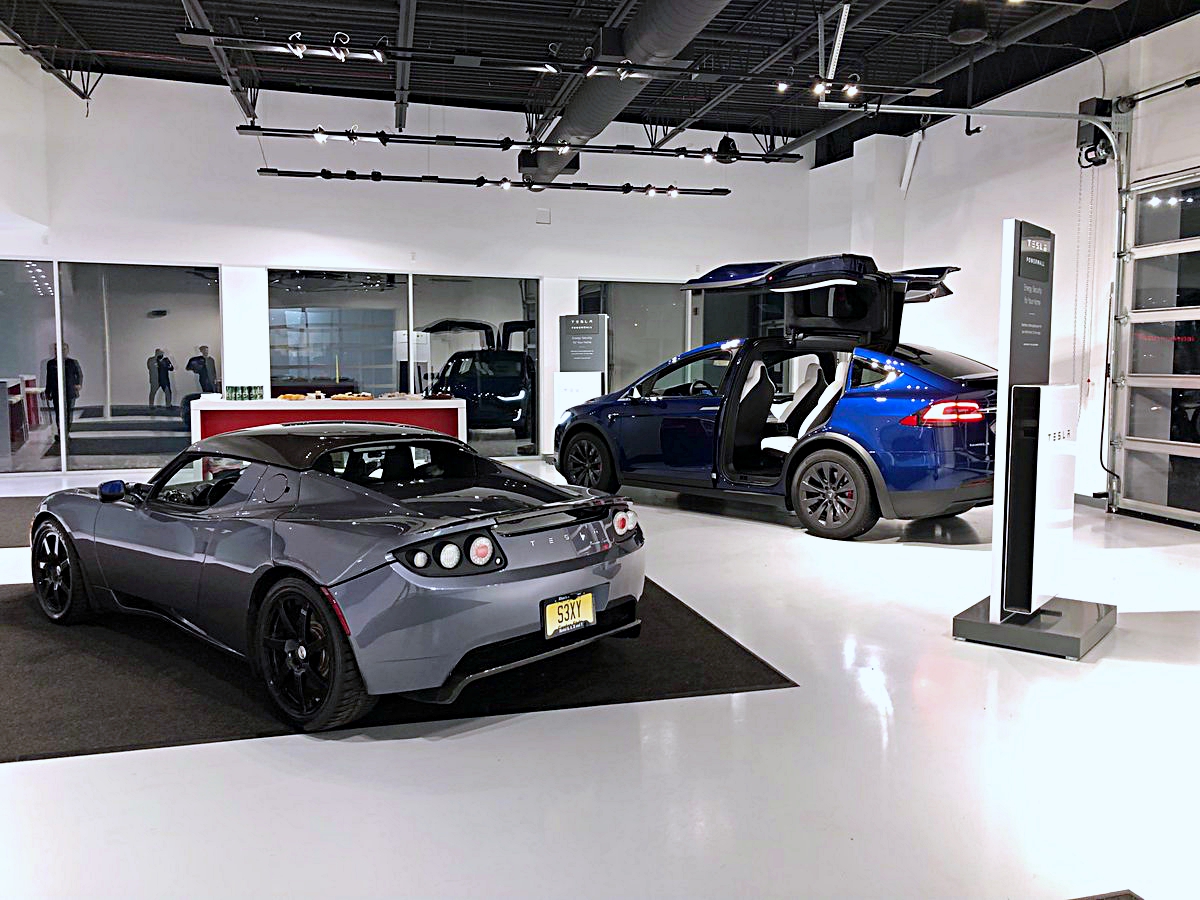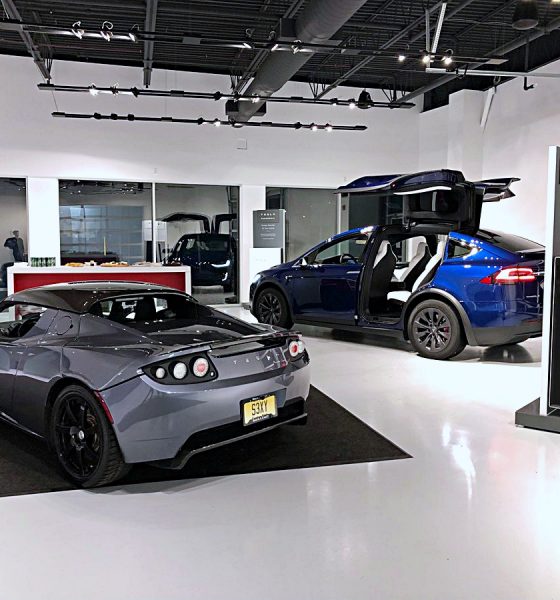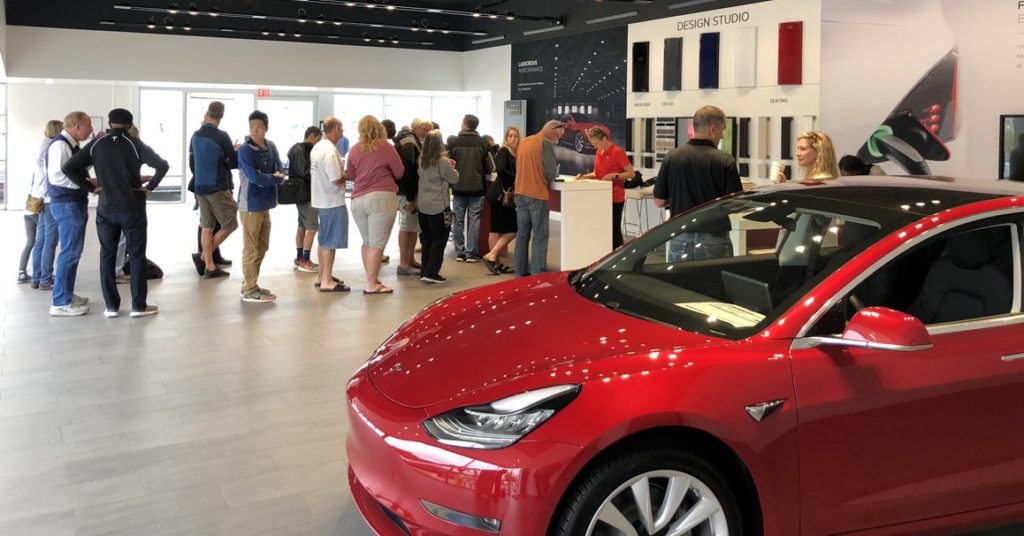

News
Tesla faces lawsuit from New Jersey auto dealer association
Tesla is currently facing a lawsuit from an auto dealer association operating in New Jersey. In a filing submitted on Wednesday to the state’s Superior Court, the New Jersey Coalition of Automotive Retailers (NJ CAR) called for legal action against the electric car maker for what it alleged were violations of multiple laws.
The dealer association argued in its filing that the New Jersey Motor Vehicle Commission, together with a number of state agencies, have so far failed to enforce consumer protection laws, advertising laws, and franchise and dealer licensing laws regarding the electric car maker. In a statement to Automotive News, Jim Appleton, president of New Jersey’s Coalition of Automotive Retailers, argued that the group does not fear competition from Tesla. Instead, it simply objects to unfair competition.
“It may appear ironic that the head of a trade association that represents new car dealers is suing the State of New Jersey to urge enforcement of the strict laws that regulate new car dealers. But NJ CAR has spent decades advocating for firm and fair rules that create a level playing field and promote a competitive marketplace that benefits consumers and honest business owners, alike. Neighborhood new car dealers don’t fear competition from Tesla — which accounts for less than 1% of the new car market in New Jersey — they simply object to unfair competition which places consumers at risk and local businesses at a competitive disadvantage,” he said.

At the center of the dealer association’s lawsuit against Tesla is the electric car maker’s expanding presence in the state. In 2015, New Jersey allowed Tesla to operate four direct sales locations, a rule that the coalition argues was violated when Tesla decided to open a fifth location in the form of a gallery. According to the auto dealers, the fifth location’s distinction as a “gallery” does not mean anything since the electric car maker conducts sales-related actions in the location. Interested customers, for example, could configure their vehicle orders on the gallery.
“Whether or not any sales are finalized at Tesla’s gallery, the above-mentioned activities that take place at the gallery are designed and intended to lead to a sale and certainly constitute ‘offering vehicles for sale,’” the complaint read. It should be noted that while the dealers’ concerns appear valid, the lawsuit fails to account for the fact that customers do not need to be in a Tesla gallery or store to configure their vehicle order. Due to the company’s simple online configurator, vehicle orders could be completed in any location with mobile internet access.
Apart from its grievances about Tesla’s fifth location, the dealer association also alleged that the state failed to enforce consumer protection laws when the electric car maker pulled a “bait and switch” with the Model 3 by announcing a $35,000 variant of the vehicle and later encouraging its customers to purchase more expensive versions of the electric sedan. This complaint will likely be easily rebutted, considering that the $35,000 Model 3 is available today, albeit as an off-menu item. Business practices that incentivize consumers to purchase higher-end products are pretty common as well, in both the auto and tech sphere.

Lastly, the New Jersey Coalition of Automotive Retailers also accused Tesla of misleading consumers by describing its Autopilot system as a “Self-Driving” solution and listing incentives and estimated gas savings in its vehicle pricing. “There is simply no justifiable basis for the State to continue to permit Tesla’s conduct here. When taken together, the actions make it clear that state defendants have chosen to actively ignore Tesla’s unlawful acts and have permitted them to continue,” the coalition wrote in its complaint.
Similar to its other allegations, the dealers’ complaints about Tesla appear to be the result of misinformation. For example, Autopilot, which comes standard with any Tesla except the $35,000 Model 3, is not advertised as a “self-driving” solution. Tesla’s autonomous driving suite is its Full Self-Driving system, which is separate from Autopilot. Tesla’s configurator also allows customers to view a vehicle’s default purchase price and one that includes potential savings. An explainer on incentives is also present on Tesla’s official website, where all vehicle purchases are made.
Neither Tesla nor the New Jersey Motor Vehicle Commission has issued a comment about the recently-filed lawsuit.
Tesla operates differently from traditional automakers since the company does not utilize a dealer network to sell its vehicles. Instead, it sells its cars directly to consumers. This allows Tesla to have full control of vehicle pricing, ensuring that the purchase price of its electric cars is regulated, while making the car buying experience as simple as possible. This strategy is akin to what is being adopted by tech companies such as Apple, whose stores provide interested customers with an opportunity to interact with its products.

News
Nvidia CEO Jensen Huang explains difference between Tesla FSD and Alpamayo
“Tesla’s FSD stack is completely world-class,” the Nvidia CEO said.

NVIDIA CEO Jensen Huang has offered high praise for Tesla’s Full Self-Driving (FSD) system during a Q&A at CES 2026, calling it “world-class” and “state-of-the-art” in design, training, and performance.
More importantly, he also shared some insights about the key differences between FSD and Nvidia’s recently announced Alpamayo system.
Jensen Huang’s praise for Tesla FSD
Nvidia made headlines at CES following its announcement of Alpamayo, which uses artificial intelligence to accelerate the development of autonomous driving solutions. Due to its focus on AI, many started speculating that Alpamayo would be a direct rival to FSD. This was somewhat addressed by Elon Musk, who predicted that “they will find that it’s easy to get to 99% and then super hard to solve the long tail of the distribution.”
During his Q&A, Nvidia CEO Jensen Huang was asked about the difference between FSD and Alpamayo. His response was extensive:
“Tesla’s FSD stack is completely world-class. They’ve been working on it for quite some time. It’s world-class not only in the number of miles it’s accumulated, but in the way it’s designed, the way they do training, data collection, curation, synthetic data generation, and all of their simulation technologies.
“Of course, the latest generation is end-to-end Full Self-Driving—meaning it’s one large model trained end to end. And so… Elon’s AD system is, in every way, 100% state-of-the-art. I’m really quite impressed by the technology. I have it, and I drive it in our house, and it works incredibly well,” the Nvidia CEO said.
Nvidia’s platform approach vs Tesla’s integration
Huang also stated that Nvidia’s Alpamayo system was built around a fundamentally different philosophy from Tesla’s. Rather than developing self-driving cars itself, Nvidia supplies the full autonomous technology stack for other companies to use.
“Nvidia doesn’t build self-driving cars. We build the full stack so others can,” Huang said, explaining that Nvidia provides separate systems for training, simulation, and in-vehicle computing, all supported by shared software.
He added that customers can adopt as much or as little of the platform as they need, noting that Nvidia works across the industry, including with Tesla on training systems and companies like Waymo, XPeng, and Nuro on vehicle computing.
“So our system is really quite pervasive because we’re a technology platform provider. That’s the primary difference. There’s no question in our mind that, of the billion cars on the road today, in another 10 years’ time, hundreds of millions of them will have great autonomous capability. This is likely one of the largest, fastest-growing technology industries over the next decade.”
He also emphasized Nvidia’s open approach, saying the company open-sources its models and helps partners train their own systems. “We’re not a self-driving car company. We’re enabling the autonomous industry,” Huang said.
Elon Musk
Elon Musk confirms xAI’s purchase of five 380 MW natural gas turbines
The deal, which was confirmed by Musk on X, highlights xAI’s effort to aggressively scale its operations.

xAI, Elon Musk’s artificial intelligence startup, has purchased five additional 380 MW natural gas turbines from South Korea’s Doosan Enerbility to power its growing supercomputer clusters.
The deal, which was confirmed by Musk on X, highlights xAI’s effort to aggressively scale its operations.
xAI’s turbine deal details
News of xAI’s new turbines was shared on social media platform X, with user @SemiAnalysis_ stating that the turbines were produced by South Korea’s Doosan Enerbility. As noted in an Asian Business Daily report, Doosan Enerbility announced last October that it signed a contract to supply two 380 MW gas turbines for a major U.S. tech company. Doosan later noted in December that it secured an order for three more 380 MW gas turbines.
As per the X user, the gas turbines would power an additional 600,000+ GB200 NVL72 equivalent size cluster. This should make xAI’s facilities among the largest in the world. In a reply, Elon Musk confirmed that xAI did purchase the turbines. “True,” Musk wrote in a post on X.
xAI’s ambitions
Recent reports have indicated that xAI closed an upsized $20 billion Series E funding round, exceeding the initial $15 billion target to fuel rapid infrastructure scaling and AI product development. The funding, as per the AI startup, “will accelerate our world-leading infrastructure buildout, enable the rapid development and deployment of transformative AI products.”
The company also teased the rollout of its upcoming frontier AI model. “Looking ahead, Grok 5 is currently in training, and we are focused on launching innovative new consumer and enterprise products that harness the power of Grok, Colossus, and 𝕏 to transform how we live, work, and play,” xAI wrote in a post on its website.
Elon Musk
Elon Musk’s xAI closes upsized $20B Series E funding round
xAI announced the investment round in a post on its official website.

xAI has closed an upsized $20 billion Series E funding round, exceeding the initial $15 billion target to fuel rapid infrastructure scaling and AI product development.
xAI announced the investment round in a post on its official website.
A $20 billion Series E round
As noted by the artificial intelligence startup in its post, the Series E funding round attracted a diverse group of investors, including Valor Equity Partners, Stepstone Group, Fidelity Management & Research Company, Qatar Investment Authority, MGX, and Baron Capital Group, among others.
Strategic partners NVIDIA and Cisco Investments also continued support for building the world’s largest GPU clusters.
As xAI stated, “This financing will accelerate our world-leading infrastructure buildout, enable the rapid development and deployment of transformative AI products reaching billions of users, and fuel groundbreaking research advancing xAI’s core mission: Understanding the Universe.”
xAI’s core mission
Th Series E funding builds on xAI’s previous rounds, powering Grok advancements and massive compute expansions like the Memphis supercluster. The upsized demand reflects growing recognition of xAI’s potential in frontier AI.
xAI also highlighted several of its breakthroughs in 2025, from the buildout of Colossus I and II, which ended with over 1 million H100 GPU equivalents, and the rollout of the Grok 4 Series, Grok Voice, and Grok Imagine, among others. The company also confirmed that work is already underway to train the flagship large language model’s next iteration, Grok 5.
“Looking ahead, Grok 5 is currently in training, and we are focused on launching innovative new consumer and enterprise products that harness the power of Grok, Colossus, and 𝕏 to transform how we live, work, and play,” xAI wrote.








